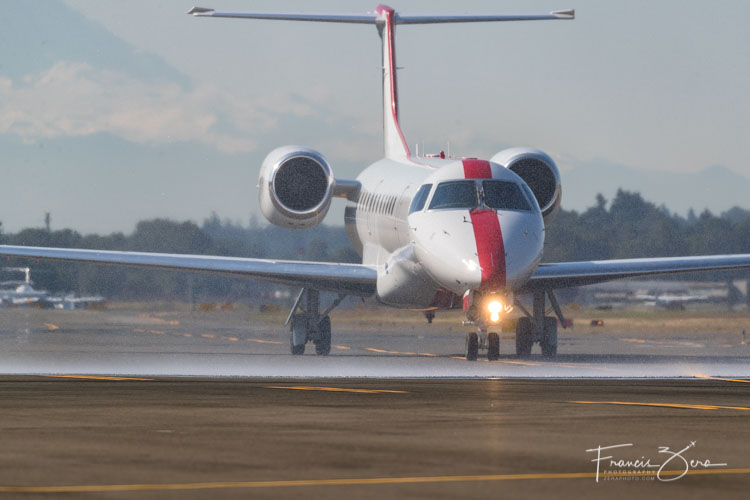
A JSX E135 wearing the old livery at Seattle’s Boeing Field on its July 1 inaugural arrival
At the beginning of August, JetSuiteX went through a rebrand and announced its new identity as JSX, accompanied with a new website jsx.com. JSX’s new name is a testament to its evolution since its inception in 2016. The company has always aimed to provide ’œJoyful, Simple Experiences’ in its innovative form of air travel as a ’œhop-on jet service.’
JSX currently offers publicly available charter flights on 30-seat jets from private terminals out of seven airports: Burbank (BUR), Las Vegas (LAS), Orange County (SNA), Napa/Concord (CCR), Oakland (OAK), Seattle-Boeing Field (BFI), and Phoenix (PHX).
Lovers of aviation make up a unique community unlike any other, and JSX’s experienced travelers seem to be the most in-the-know thanks to its elevated and efficient service on short distance flights in highly desirable markets. Luckily for frequent travelers, the company continues to work toward improving the aviation industry. As JSX’s co-founder and CEO Alex Wilcox shares, ’œit’s an industry that once you start working in, it’s really hard to get out.’

A SFO-branded reusable water bottle. This is probably a good enough reason to never use a plastic water bottle again. – Photo: AirlineReporter
First off, let’s be clear, I like the environment and want to not only do my part to make sure we have a nice little planet to live on, but also to motivate others. However, the plastic water bottle sales ban at the San Francisco International Airport (SFO), taking effect on August 20th, got me thinking. Do these sorts of changes work as well in a ’œtrapped’ world, like an airport? I say that since people in an airport do not have as much choice’¦ they mostly can only pick among the options given to them on the airside (after security).
Over the years, airports have grown the choices airside by leaps and bounds. Heck, many airports are more like shopping malls than an airports. But in the end, you are limited. If your local grocery store decides to no longer sell a product and it is super important to you… cool, just go down the street to the next one. At the airport, that is going to be a bit more of an ordeal.
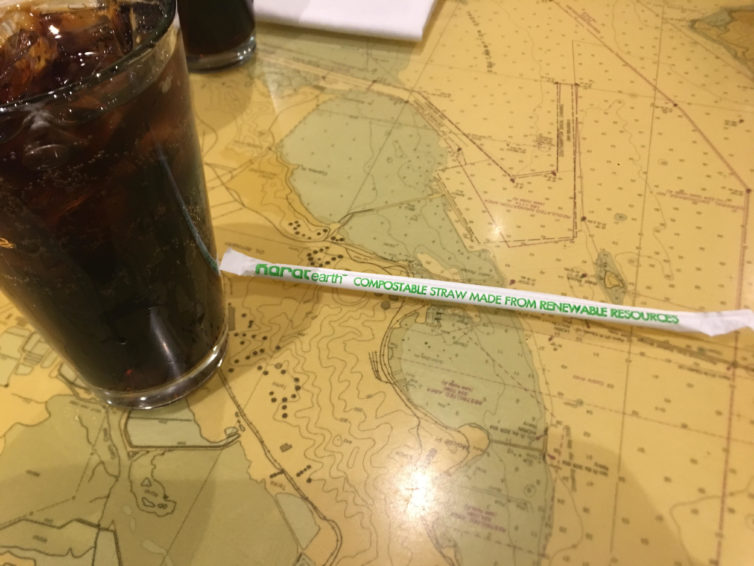
My paper straw that I got to try while flying through SFO last time – Photo: David Parker Brown
I will say that I was shocked by some of the numbers. On average, SFO sells about 10,000 plastic water bottles per day, and that equals 3,650,000 per year. No question that is A LOT of plastic and even if they are all recycled (saying they are being recycled), it is not a good thing for the environment. It actually makes me pretty sad so many people do not bring their own reusable bottles (my fianc brings one for both of us and is always reminding me to hydrate). Conversely, that high number of bottles also shows there is A LOT of demand from people to drink water in plastic bottles. Is it fair to require passengers to use other options?
Sure, sure, getting a reusable plastic bottle is not that much to ask, and the airport is providing some other good options, including water in other packaging (like aluminum and glass). But how expensive will those be and how will that impact a family of four on a fixed budget? Will passengers accept the change? Should there be some line of convenience vs doing what’s right, and is this new policy crossing it? Honestly, I don’t know the answers. But let me share with you some of my thoughts and I hope that we have a good conversation in the comments…
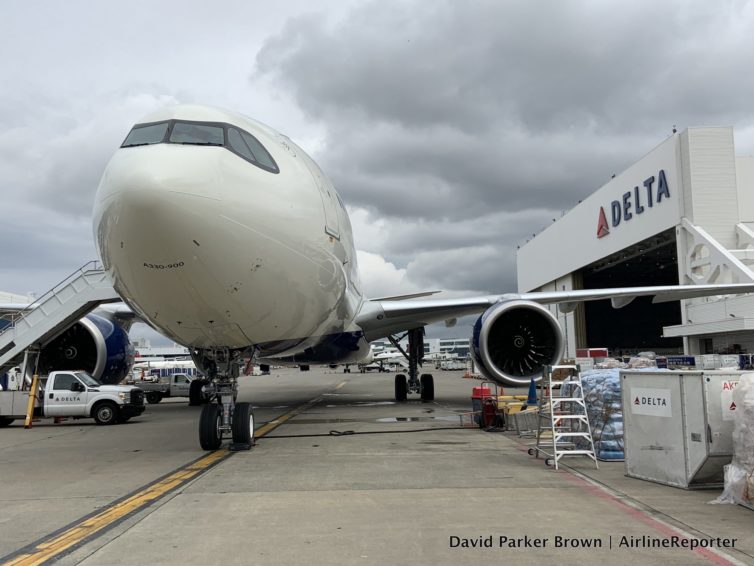
I am pretty sure that there is more to the A330neo than just those raccoon eyes!
Timing can be a magical thing. I was just talking to my pal Jason Rabinowitz about airplanes (we do this often) and I was asking why the Airbus A330neo was such a big deal. I actually tracked down our high-end chat:
Me: “Why do we care so much about the A330neo? Just b/c that is all we have right now to celebrate?”
Jason: “It new. And it all we got.”
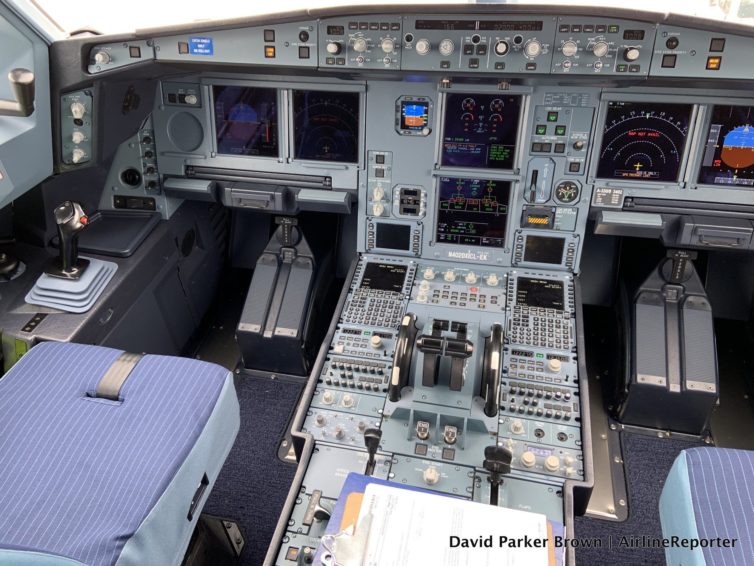
Some eye candy to get you to keep reading and/or looking at the pics
Don’t get me wrong. I have still been excited watching the new A330 go into service, but it doesn’t match the excitement of the 787 Dreamliner, 747 Intercontinental, or A350 XWB.
The day after my award-winning chat with Jason, I received an invite from Delta Air Lines to come check out one of their new Airbus A330-900neos at Seattle-Tacoma International Airport (SEA). Perfect.
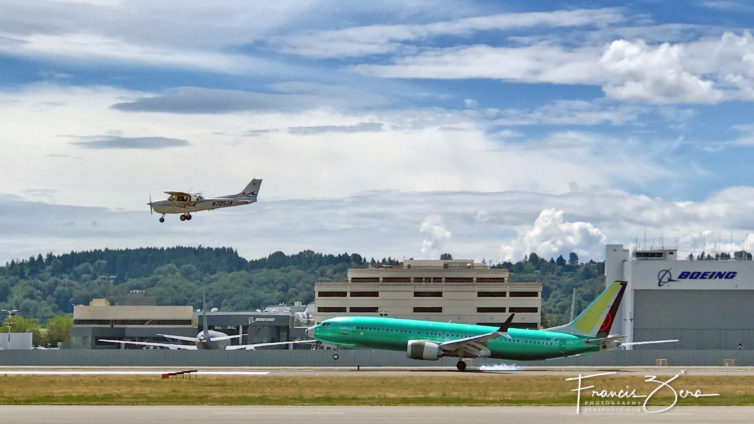
Always lots going on at BFI – that’s an Air Canada B737 MAX 8 fresh from the Renton plant, landing next to one of Galvin’s C172s
This is a continuation of my multi-part series on learning to fly. You can read the whole Fly With Francis series here.
A few weeks ago, I completed the written pre-solo exam and Cessna 172S checkout paperwork. Both tests are specific to Galvin’s flight school/rental program. The former test covered lots of flight-safety topics, while the checkout test covered aircraft-specific things like performing weight and balance calculations, flight planning, fuel consumption, takeoff and landing distances based on hypothetical weight and balance figures, and so on.
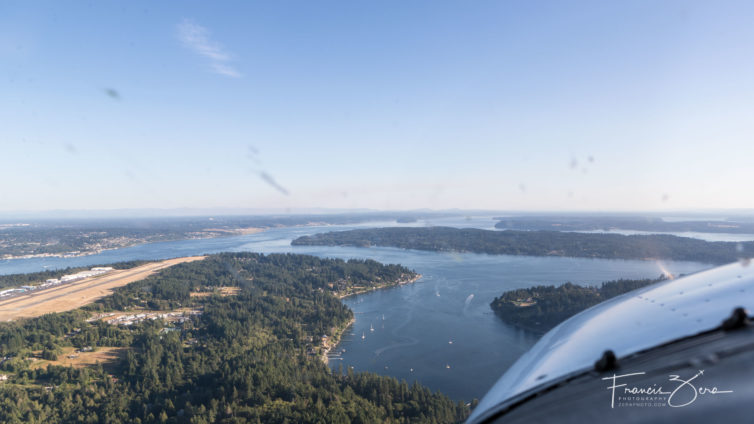
Taking a spin around the west side of TIW (Tacoma)
I’ve had to back off the frequency of flight training a bit; this is definitely an expensive exercise. I’ve gone from flying two or three times a week to three times every two weeks to stretch the budget a bit. This is, based on conversations with fellow students, also nothing out of the ordinary.
That pacing, though, has made me feel like my skills have been stagnating a bit. I had a frustrating flight a week or so ago, where nothing seemed to go smoothly and my memory of the required procedures needed refreshing by the instructor, rather than my just doing them without prompting; it was disheartening.
There have been a couple of flights like that.
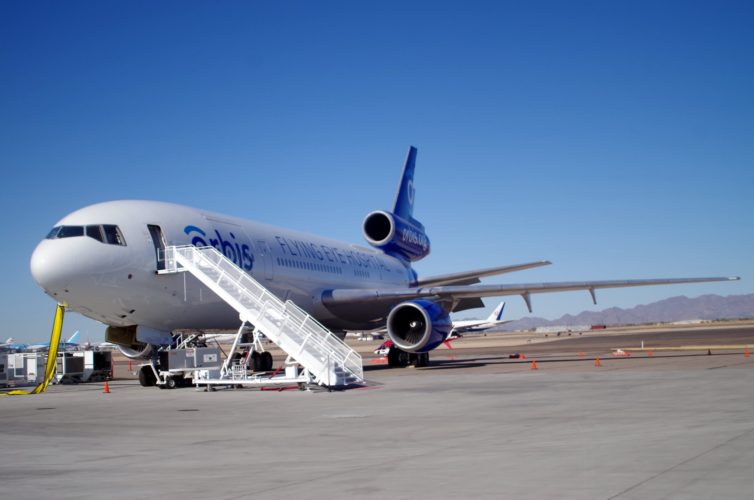
A ground crew member’s view of the Orbis Flying Eye Hospital. – Photo: Justin Schmid | AirlineReporter
Part of what fascinates me when I visit an airport is wondering where the aircraft have been. Look up a tail number for any commercial aircraft, on a site like FlightRadar24, and you’ll find a long list of destinations. For widebody aircraft, those destinations get noticeably more far-flung. While many aircraft have a rich history, few have made an impact like the MD-10 known as N330AU – also known as the Orbis Flying Eye Hospital. This is not just any ‘ol commercial or cargo aircraft, it provides some very special services.
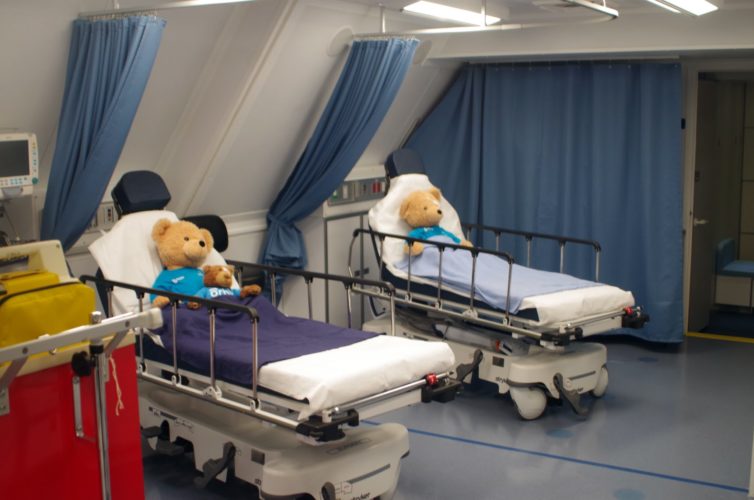
The inside of the Orbis Eye Hospital is “bearly” recognizable as an MD-11. – Photo: Justin Schmid | AirlineReporter
Val Suberg, Orbis’ senior manager of aircraft maintenance, can prove that point with just one story about two sisters from Ethiopia. They were blind as a result of pediatric cataracts, which would be a simple surgery in many countries. The sisters, though, had traveled to Addis Ababa and found out that the hospital there only served adults. A member of the hospital staff told them that the Orbis Flying Eye Hospital would arrive in a few weeks, and that they could treat the sisters. They waited in Addis Ababa and were selected for surgery. They got to see each other for the first time, and were eventually able to attend college. Now that is a special plane, with some VIP crew!








